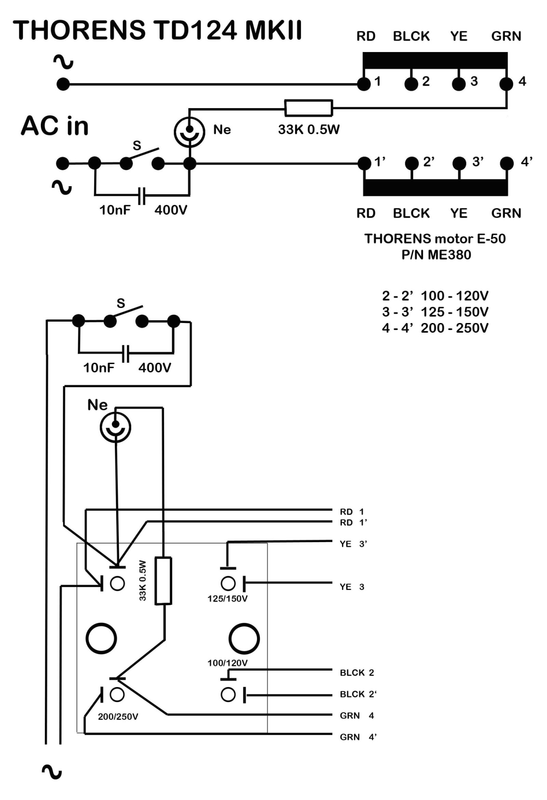I suspect that your local repairman suspects that there either isn't a mains switch suppressor fitted (which you've fit by way of the X2 cap across live and neutral at the switch) or that the existing one is faulty (unlikely, unless you are still getting a 'pop' on switch on).
Although it would need testing in situ (i.e. in your home with your amp and telly) it would be worthwhile testing deck switch off with the neon strobe lamp bypassed. The following drawing is quite informative as it illustrates how the lamp is wired in series with the motor coils, a copy of this (along with the one from yesterday) should give your repairman a good idea as to what connects to what and where, right through, including the motor coils.*
* This illustration should also help make clear why I was confident that your motor coils are sound, as green to green at commutator (for 200 to 250VAC operation) represents connecting via the first tap on each of the two coils (i.e. the full coil paths are in use).






